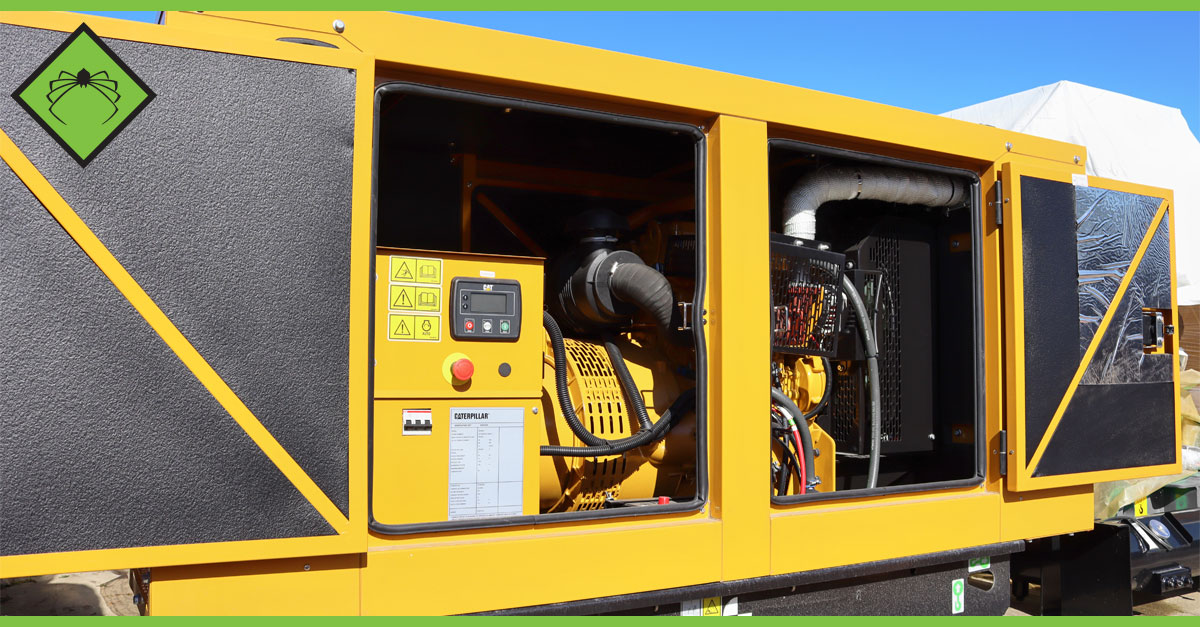How Does Sound Attenuation for Generators Work?
One of the biggest improvements in construction & engineering over the last 30-40 is noise levels. In particular, the noise levels of engine-driven equipment.
...This might be surprising, but it is true. Workers such as builders and civil engineers often rely on diesel generators for steady, convenient & inexpensive electrical power, both to run the electrical equipment that makes modern construction possible and to power the signs, lights and safety equipment that has turned construction from one of Britain's deadliest industries into what it is today. None of that would be possible without the humble diesel genset, and they themselves have changed drastically over the years. Not only are the engines much quieter and more efficient, advances in sound-attenuating housings and design have made them a lot more pleasant to work around.
The most commonly used attenuation systems rely on isolating the generator from workers and the public alike with a sound-attenuated canopy or enclosure - a housing which allows the generator to get the air it needs to run and to carry off its filtered exhaust, but which also deadens the vast majority of the sound the machine makes in operation. The huge, roaring diesel gensets of the 1960s and 70s are now clean, caravan-like shapes which many passers-by won't even realise can house high capacity generator sets.
How is the Sound Attenuated?
The key is in the sound-absorbing materials that line the insides of the housing. Most are of a soft yet very dense material, and feature an open-pore surface that is highly effective at directing sound waves deep into the interior of the muffling material where the kinetic energy of the sound pressure waves is transformed into heat, which radiates off harmlessly (and silently).
Different muffling materials have differing levels of effectiveness at absorbing sound in this way. This is called the material's "sound absorption coefficient", which is a number between 0 and 1. A material with a coefficient of 0 would transmit sound perfectly - even better than air. A material with a coefficient of 1 would block all sound completely, although we haven't been able to develop anything quite that effective yet. An effective absorbtion material will have a coefficient of around 0.75 or above.
Modern sound attenuation housings use a layered approach, with the sound first moving through a porous muffling material - a perforated lining which is "tuned" to absorb and reflect back the particular frequencies of sound that specific genset produces at peak efficiency. This is followed by a hard, weatherproof shell on the outside to protect the muffling material and of course the genset itself. In addition to simple sound muffling, many attenuation housings also use active and reactive silencing systems to further eliminate harmful or unpleasant levels of noise that the genset may produce.
Bespoke Generator Noise Reduction
One important thing to understand is that each generator engine produces a unique sound profile. One might be higher while another has a lower overall pitch. Most are complex mixes of different pitches. A modern, well-designed sound attenuation system will be carefully tuned to be most effective against the sound profile of a particular model of genset, and may not necessarily be as effective if used with a different engine.
For more information, or to discuss your requirements with our team of experts, call us on +44 (0) 1977 657 982 or email us at enquiries@ade-power.com.
Silent Generators Silent/Soundproof Generator EnclosuresShare this Post
Blog published by ADE Power on November 16th, 2016

